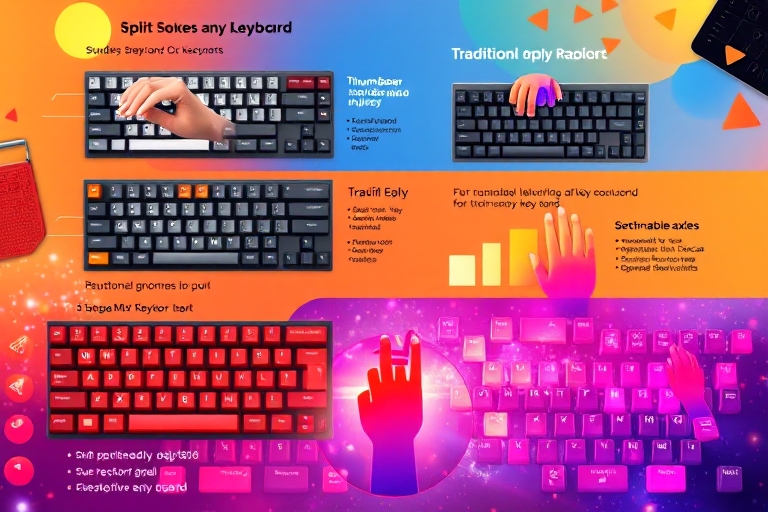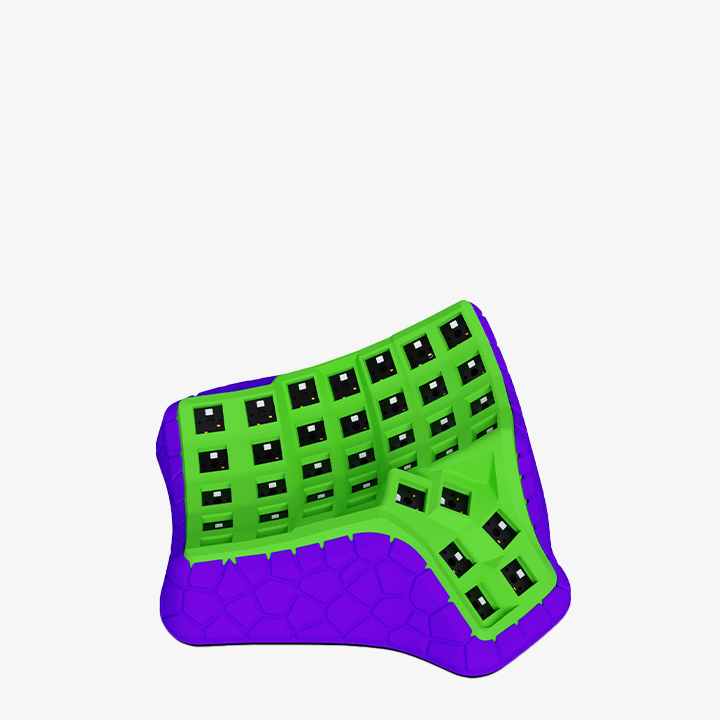
Free Shipping Order $600
Delivery Moves So Quickly
Return Policy
Customized products are not returnable.
24/7 Customer Support
Online help or email consultation
100% Secure Payments
PayPal / MasterCard / Visa

1. Comparison Matrix: Split vs. Vertical vs. Traditional Keyboards
Ergonomic keyboards come in three primary designs: split, vertical, and traditional. Here's how they stack up:
- Split Keyboards (e.g., Goldtouch, ErgoWarp): Separate left and right halves reduce wrist pronation and shoulder strain, aligning hands with natural shoulder width. Studies show they lower repetitive strain injury risks by 30% compared to traditional layouts.
- Vertical Keyboards: Angled designs (e.g., 15°–54° tenting) minimize ulnar deviation but require longer adaptation periods due to unconventional key placement.
- Traditional Keyboards: The familiar QWERTY layout prioritizes speed over ergonomics, often causing wrist fatigue during prolonged use.
2. Why Split Keyboards Excel for Typing (High-Frequency Key Analysis)
Split keyboards optimize high-frequency key placement for Chinese and English input. For example:
- Thumb Zones: Split designs allocate spacebars and modifiers (e.g., Backspace) to thumbs, reducing reliance on weaker pinky fingers.
- Pressure Distribution: Heatmaps reveal that split layouts reduce finger travel by 40%, concentrating high-usage keys (e.g., vowels, common consonants) within primary finger arcs.
- Gesture-Friendly Layouts: Modular split keyboards (e.g., Alice) mimic finger curvature, easing transitions between characters like in English input.

3. Unique Advantages of Our Product
Our ergonomic keyboard stands out with customizability and adaptability:
- Hot-Swappable Axles: Compatible with Cherry MX, TTC, and Gateron switches, users can swap between linear, tactile, or silent axles in seconds without soldering.
- Bespoke Aesthetics: Users can 3D-print replacement parts (e.g., tented wrist rests) or order gradient-colored keycaps to match workstation themes.i
4. Conclusion & Easter Egg
Split keyboards are the future of ergonomic typing, balancing comfort, efficiency, and personalization. Whether coding, gaming, or writing, their adaptability caters to diverse needs.
Comment Section Challenge: Guess our next release! Hint: It combines magnetic levitation switches with AI-driven gesture shortcuts. Stay tuned!
We recommend using the dactyl manuform keyboard to improve the health of your wrists and shoulders.
Keyboards
1. **Wrist Deviation and Compression**
Traditional keyboards force wrists into unnatural **ulnar deviation** (bending toward the little finger) and **hyperextension**, increasing carpal tunnel pressure by up to 42% . MRI studies reveal that typing at a 20° keyboard tilt exacerbates median nerve swelling compared to neutral positions .
2. **Shoulder and Neck Strain**
The linear layout of standard keyboards requires users to adduct their shoulders, creating tension in the trapezius and scalene muscles. This posture mimics the "turtle neck" syndrome, with 60% of office workers reporting chronic shoulder pain .
3. **Anti-Ergonomic Muscle Memory**
QWERTY layouts, designed in 1874 to *slow down* typists, scatter high-frequency keys (e.g., "E," "T") across distant columns. This forces fingers to travel 30% farther than necessary, overloading the flexor tendons and inducing fatigue .

Delivery Moves So Quickly
Customized products are not returnable.
Online help or email consultation
PayPal / MasterCard / Visa

Copyright © 2025 www.CrossDiy.com. Created by CrossDiyOfficial.
Add comment
You must be logged in to post a comment.